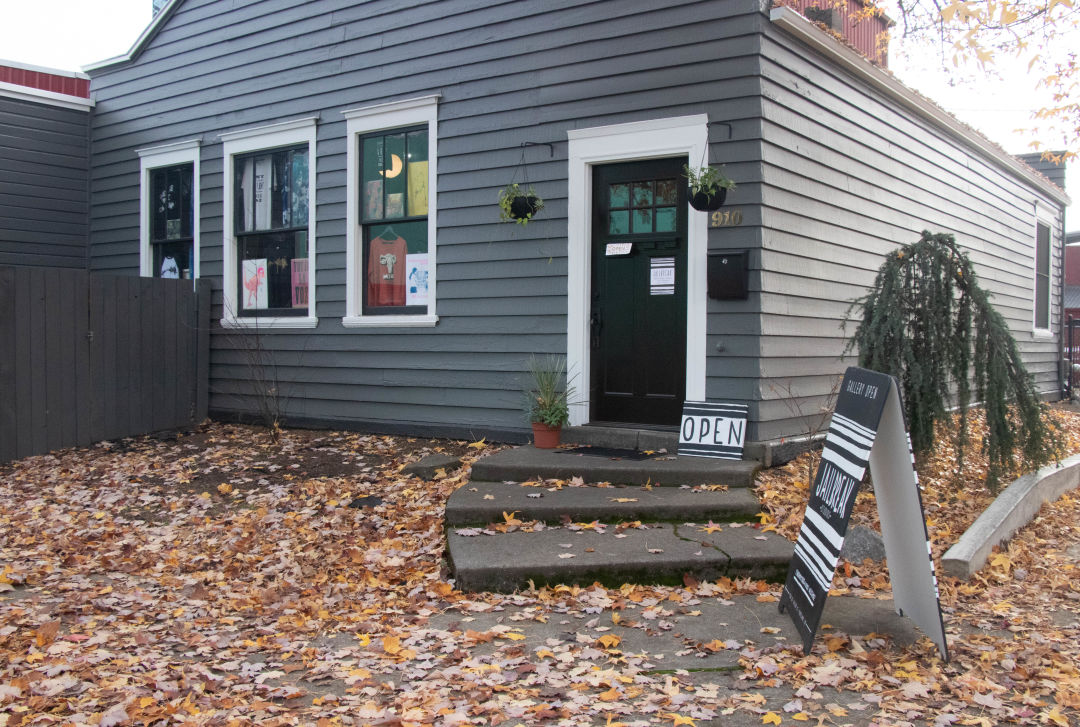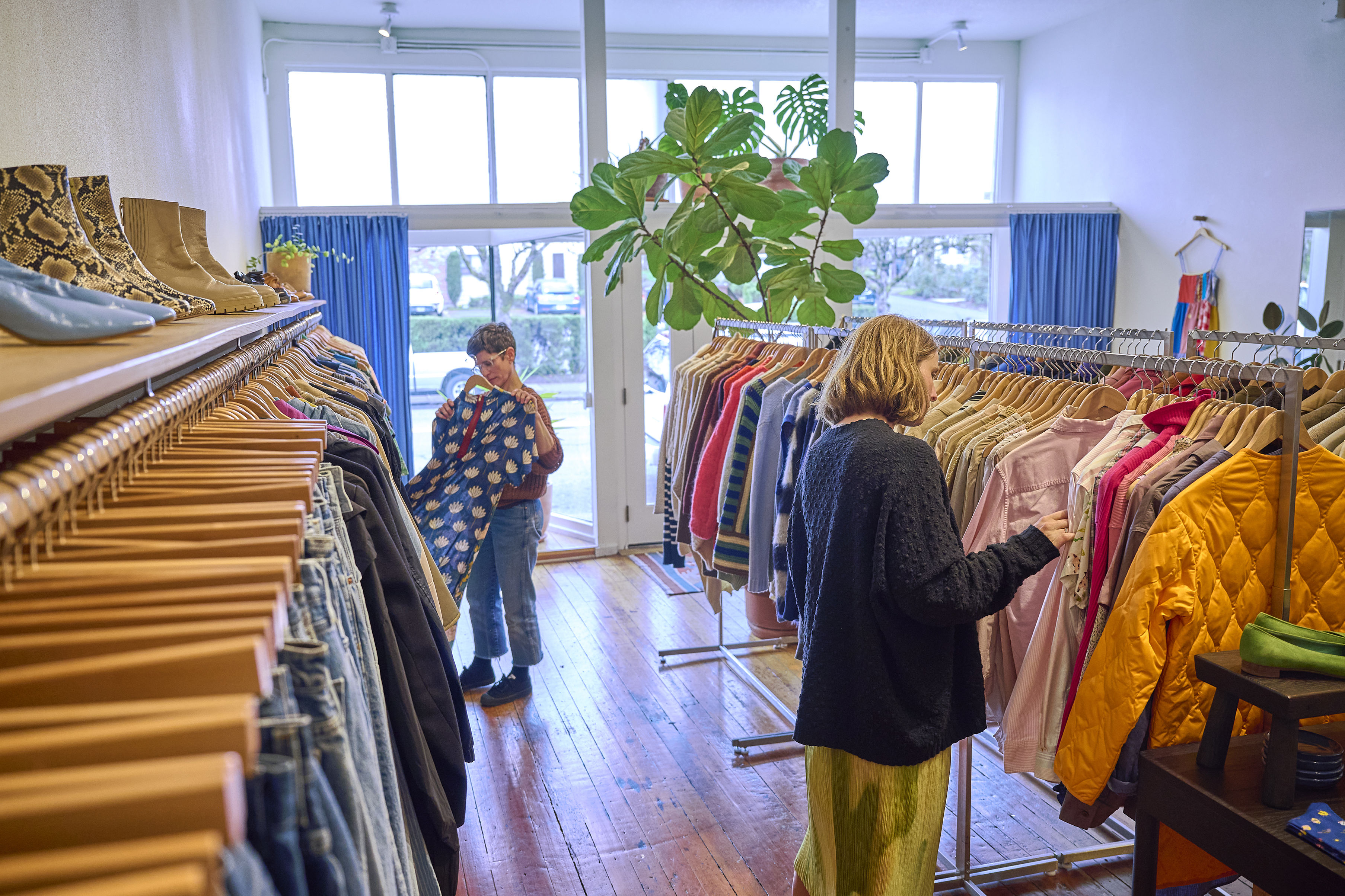Jailbreak Studios Provides Minority Artists Opportunity to Showcase Their Work

Image: Alli Weseman
When the weather is warm, it’s not uncommon to see local artist Ursula Barton working outside of Jail Break Studios, her Southeast Portland storefront. The brainchild of Barton and Bethany Von Steuben, Jailbreak Studios is half art gallery, half retail space, showcasing under-represented local artists who may not have had the opportunity to exhibit anywhere else.
Barton and Von Steuben met when Barton posted an ad on Craigslist looking for help with small projects. Von Steuben—who was working as a business consultant but hoping for more creative gigs—recognized Barton’s art and realized she could do more than she was asking in the ad, eventually coming on as the retail manager. The pair help curate the gallery together.
Initially, Jailbreak served as Barton’s personal studio and showcased work by artists that shared the lease with her. Eventually, the gallery opened to the public on weekends and started participating in First Thursdays. When the other artists on the lease began to leave the space, Barton, who was attached to the studio, faced an internal crisis. She'd been approached by Capital One to design a mural for their new downtown Portland café, and feared that accepting the project meant selling out. Quickly, though, she realized she could reinvest the money from the mural back into Jailbreak by taking over the building's lease.
“I decided to take over the whole lease in September. It was really hard for me to justify accepting money from a really large bank after living through the economic crash [of 2007-08]," says Barton. "I realized, well, if I can transfer the money into a project that empowers our community, then I can feel good about accepting.”
Once the mural was completed, Barton was free to start working on her dream of “creating a platform for underrepresented artists.”
“We wanted to create something that didn’t already exist in Portland and that could possibly create an opportunity for all the new people who are coming to Portland to invest back in the creatives, into the community that first brought them here in the first place,” says Barton.
Art pricing is a double-edged sword: it's easy for artists to make less than what their work is worth, and original, locally-produced artwork is often too expensive for casual consumers.
“Our main mission was to be all inclusive and we wanted that to reflect economic inclusivity. Retail is our way of creating a lot of different price points so there’s something in here for everyone,” says Barton.
In February, Jailbreak will also begin its artist residency program, providing access one artist with access to the art studio, transportation, housing, and a gallery show for the month of March. Artist Taylor Binda will be the first resident artist. Other artists featured in the gallery receive 60% of the profits from retail sales of their artwork, while the store takes 40%. Most small artworks come in under $100. Artists that show in the gallery receive 70% of the profits while the store takes a 30% curation fee. The gallery sources their artwork through various avenues: word of mouth, social media, browsing My People’s Market and the Portland Indigenous Marketplace.
“I really wanted to use what I’ve built to lift up people who have maybe not gotten the opportunity that they deserve,” says Barton.




